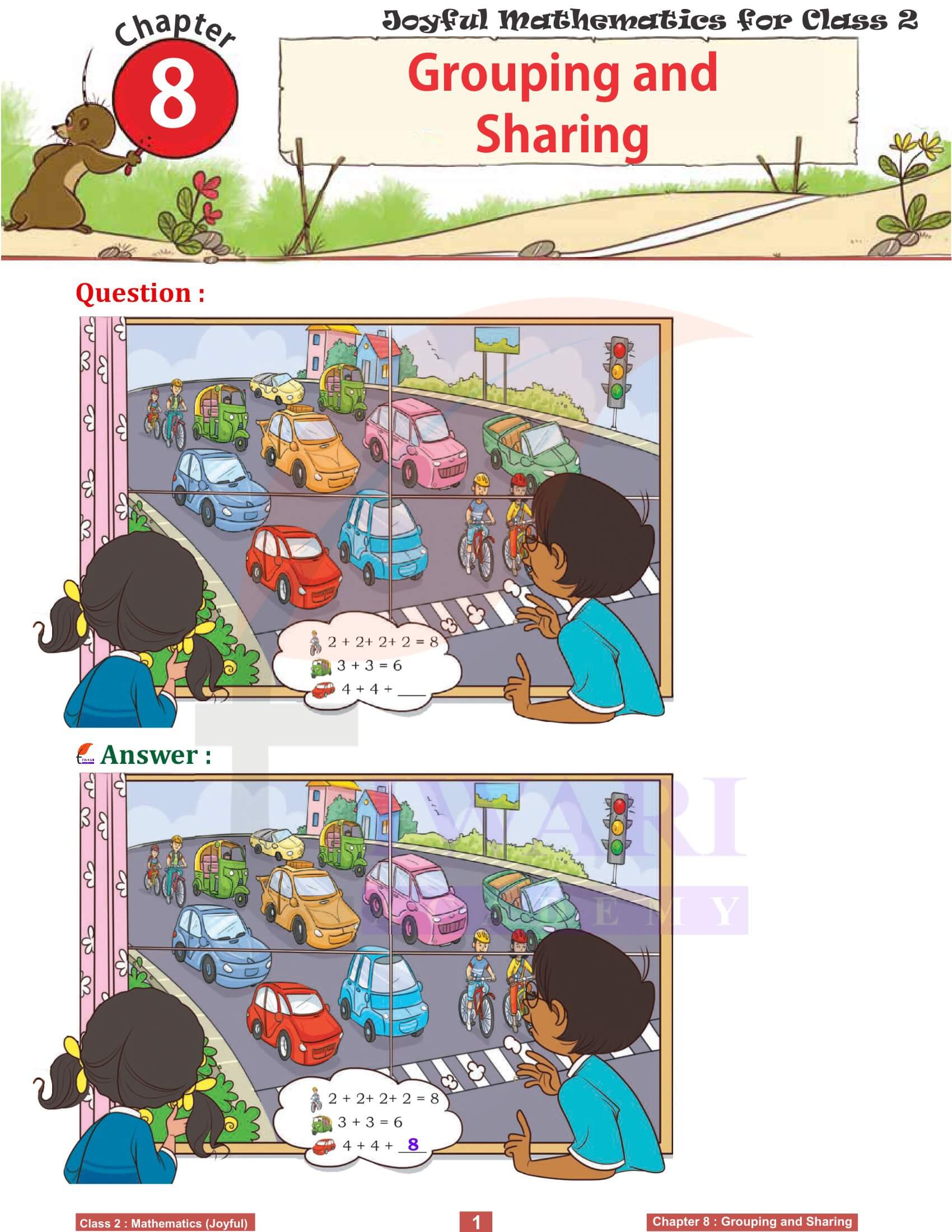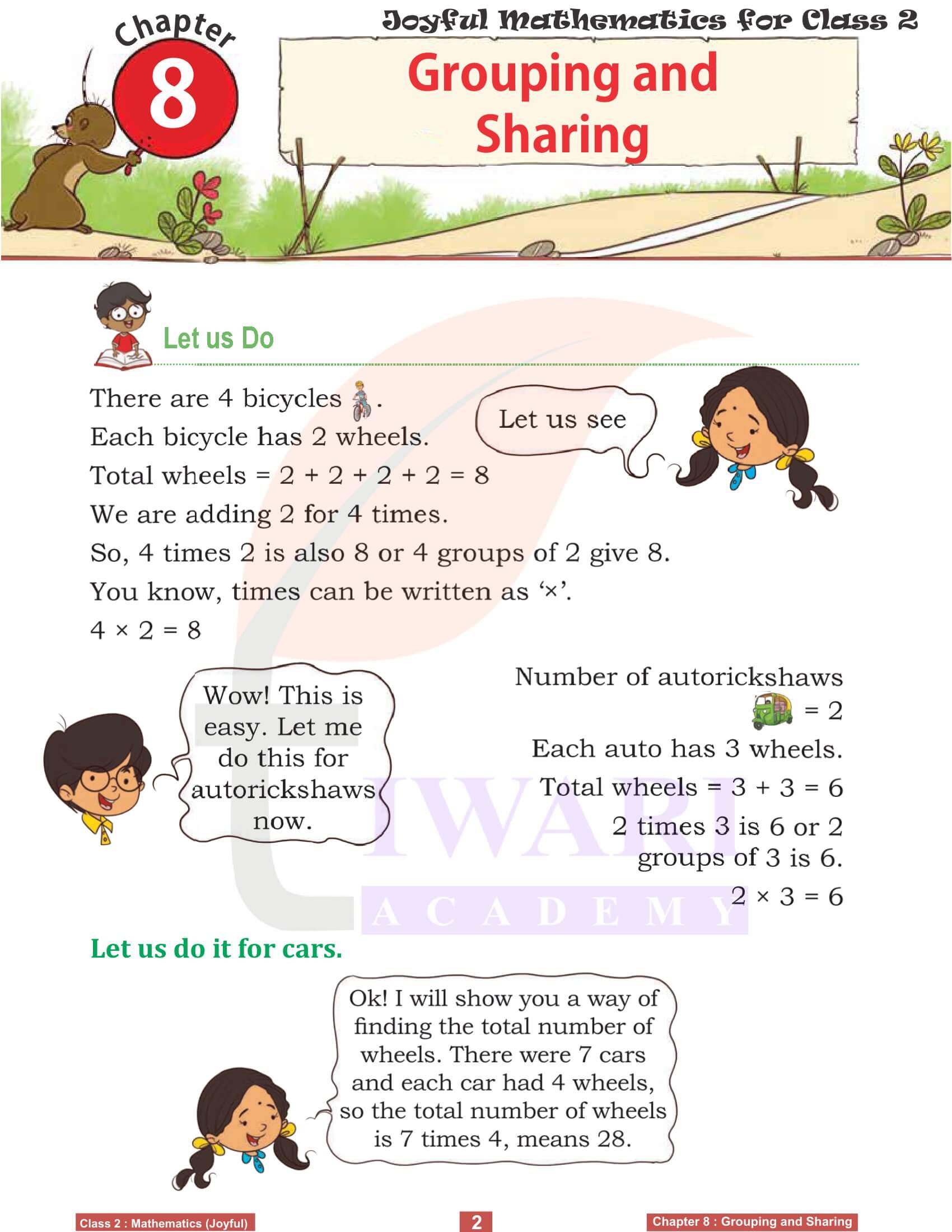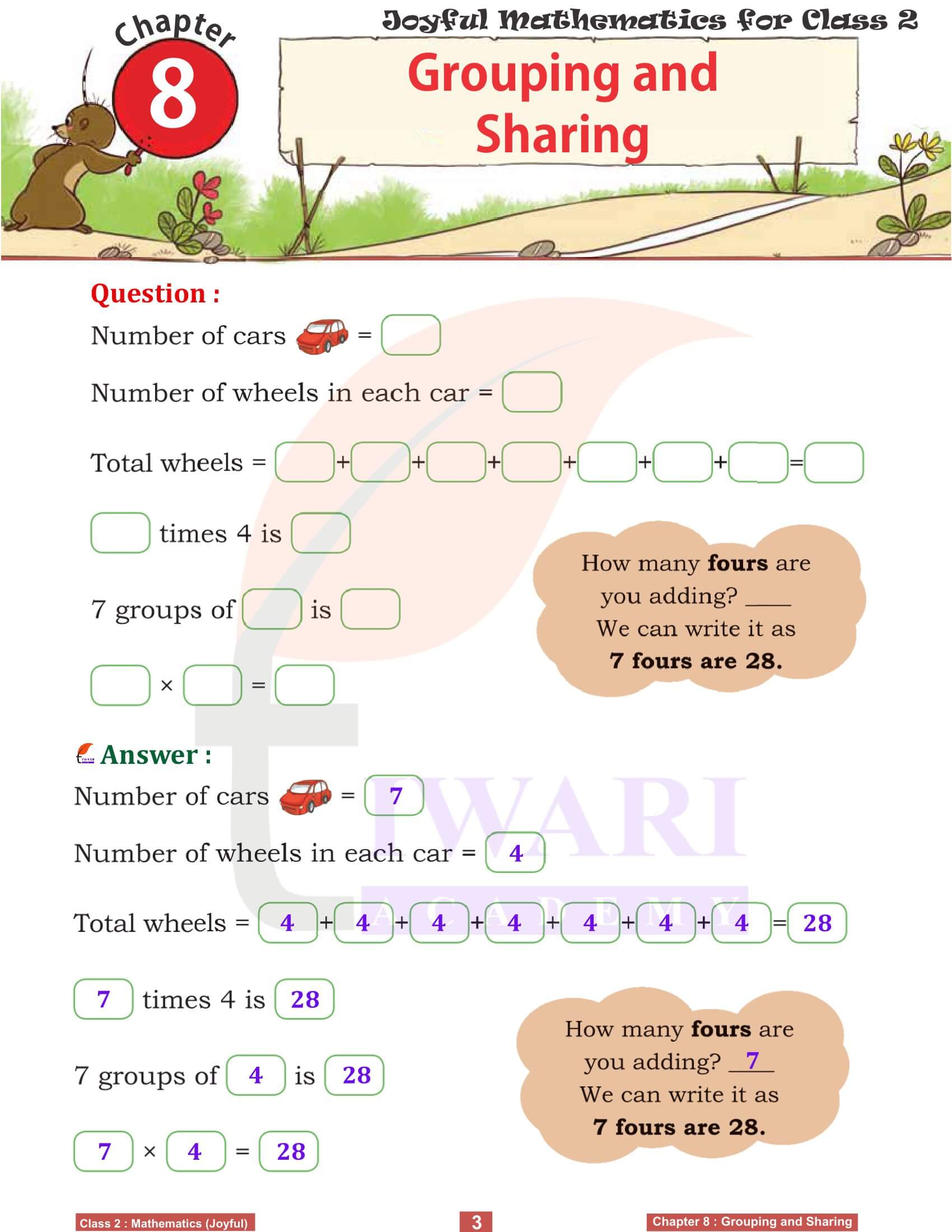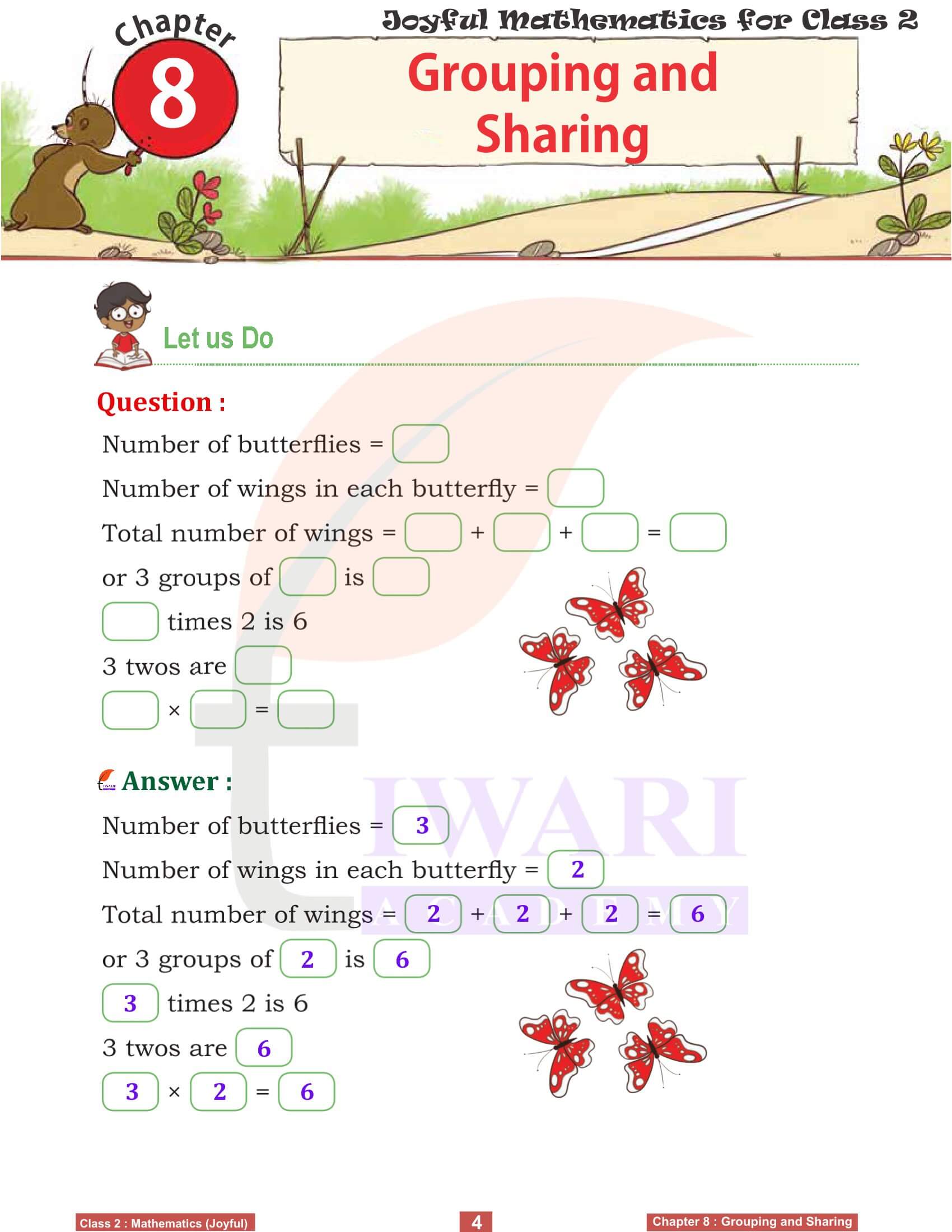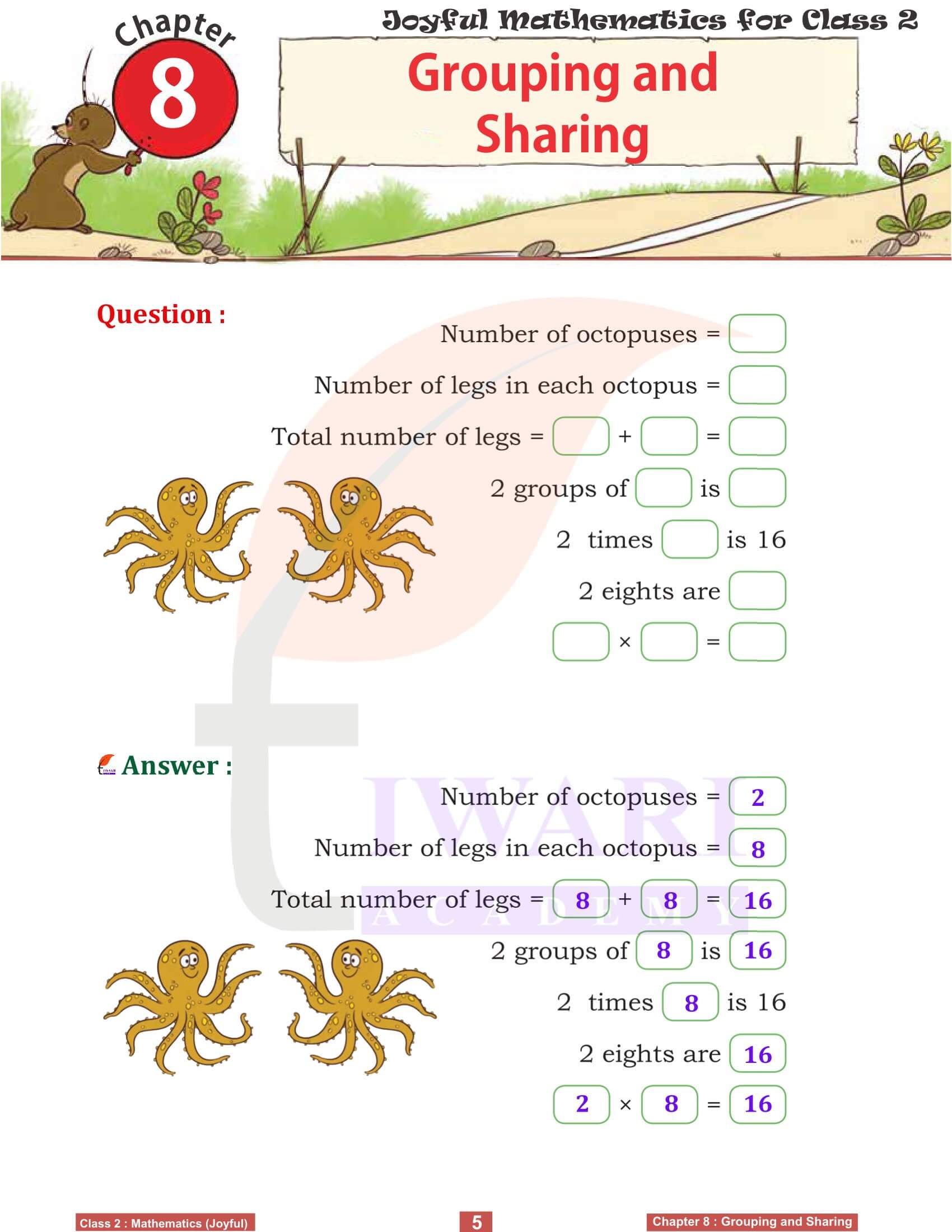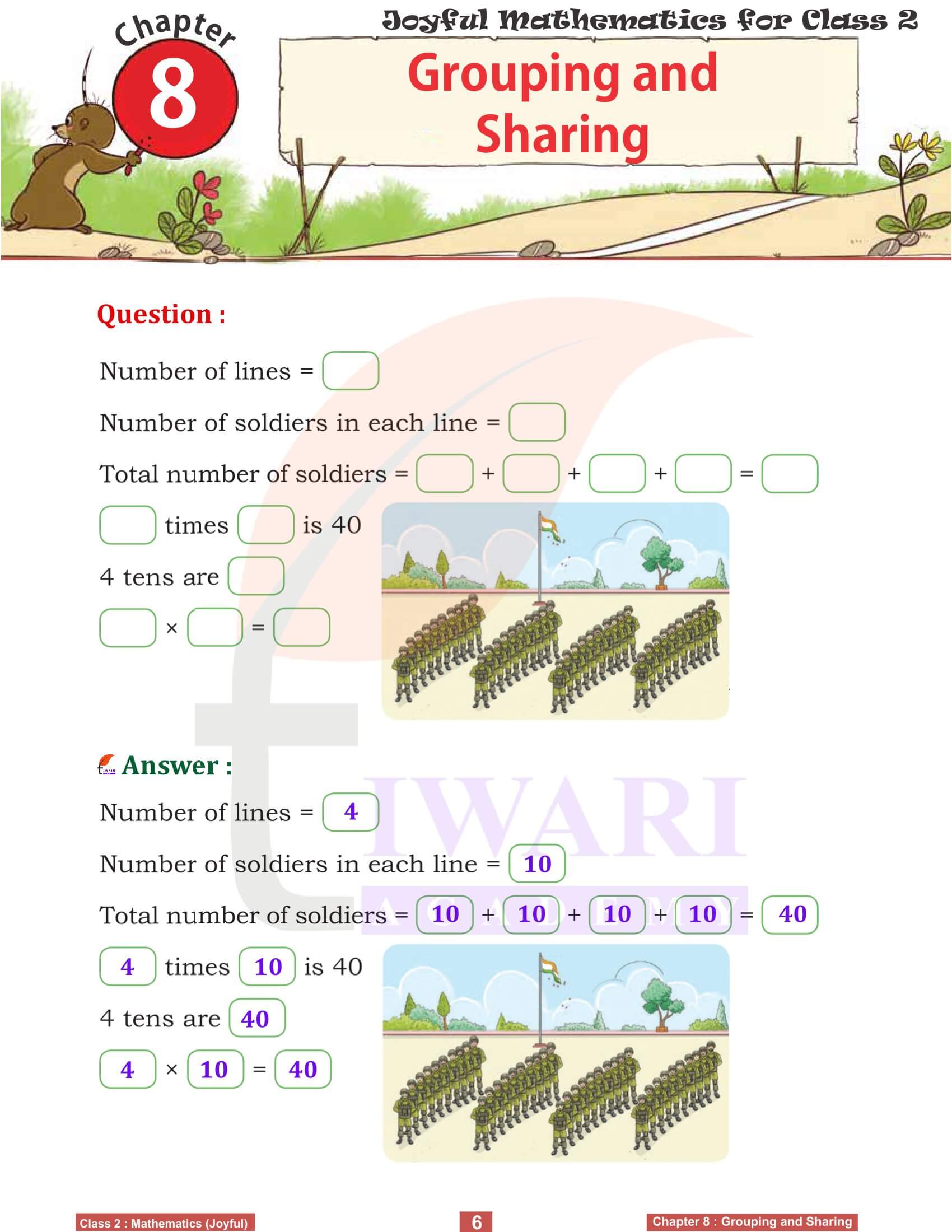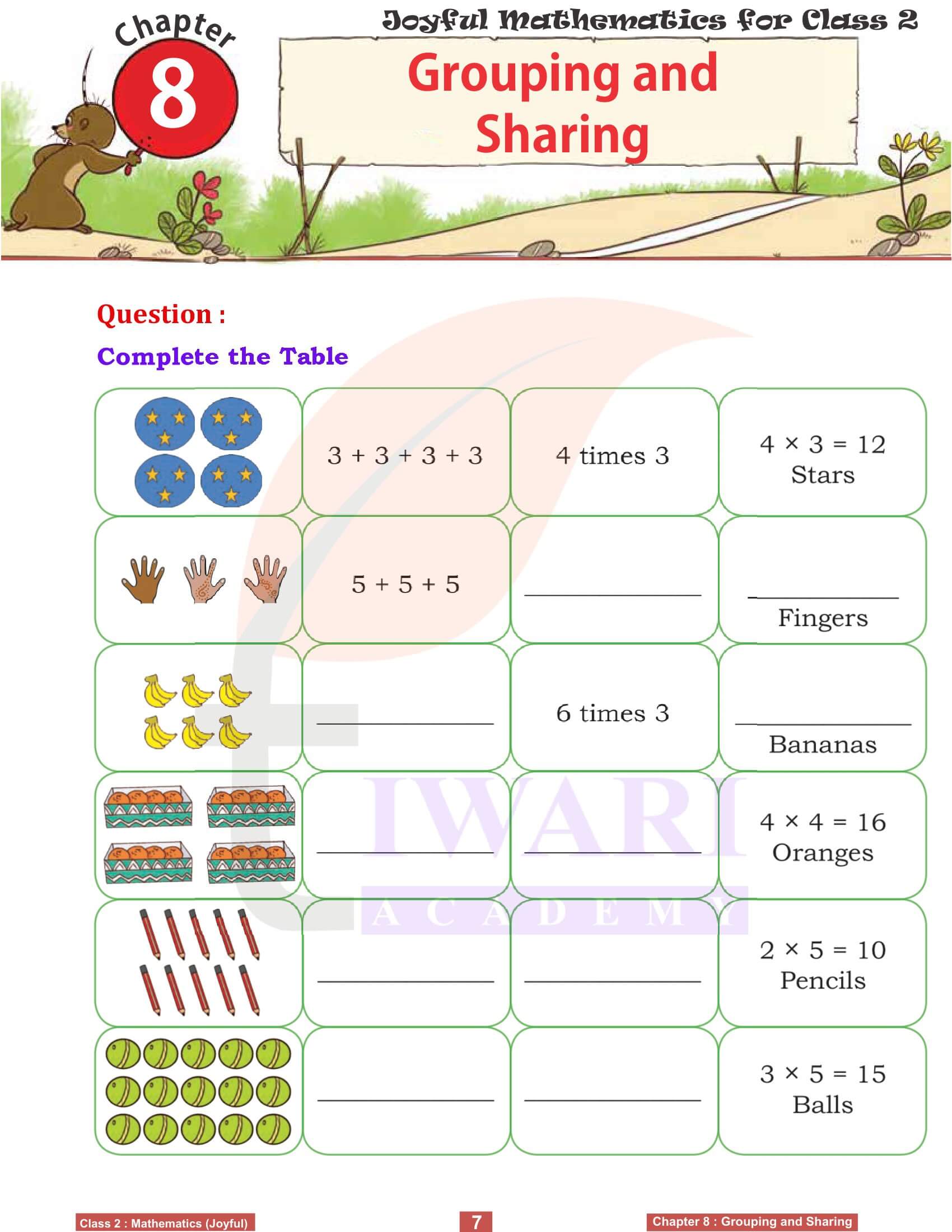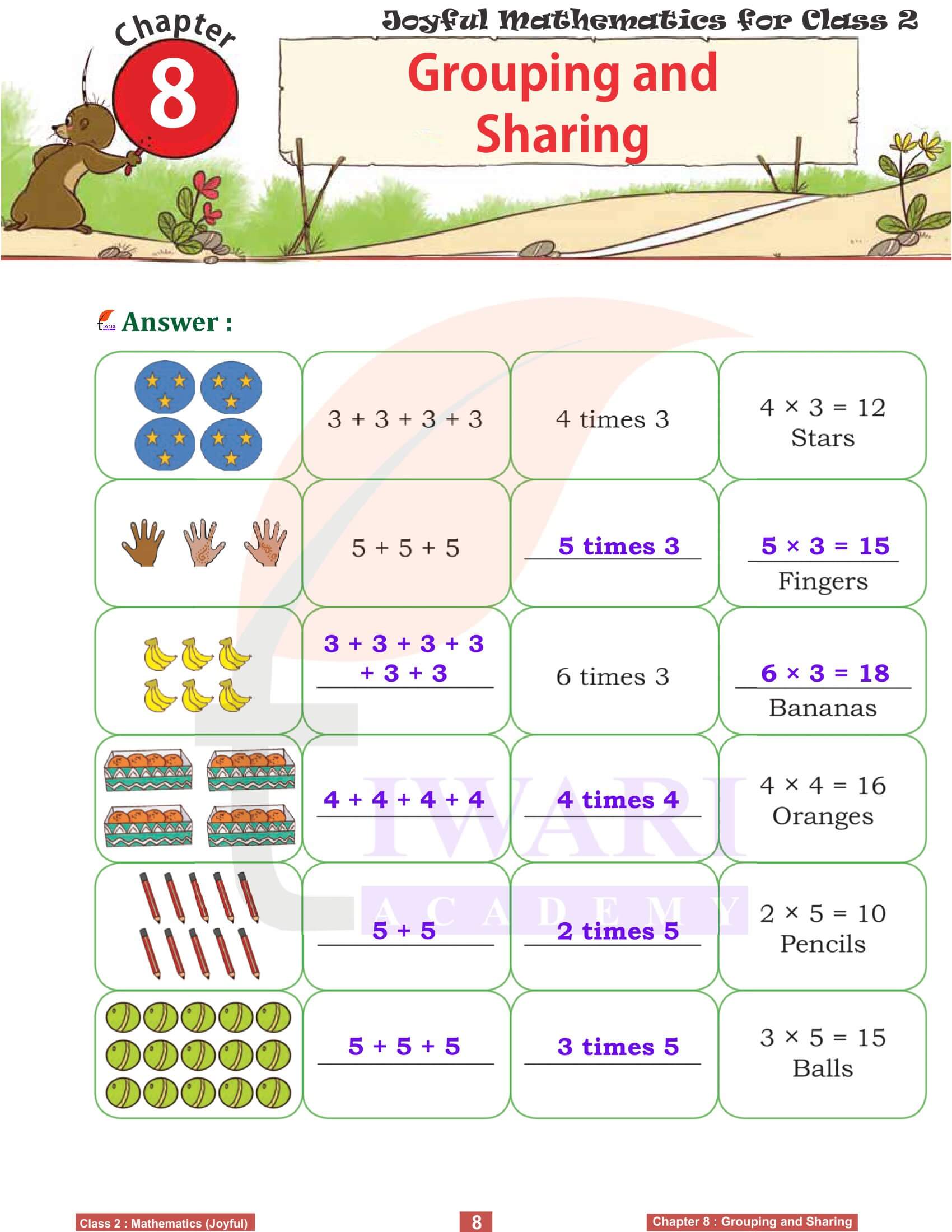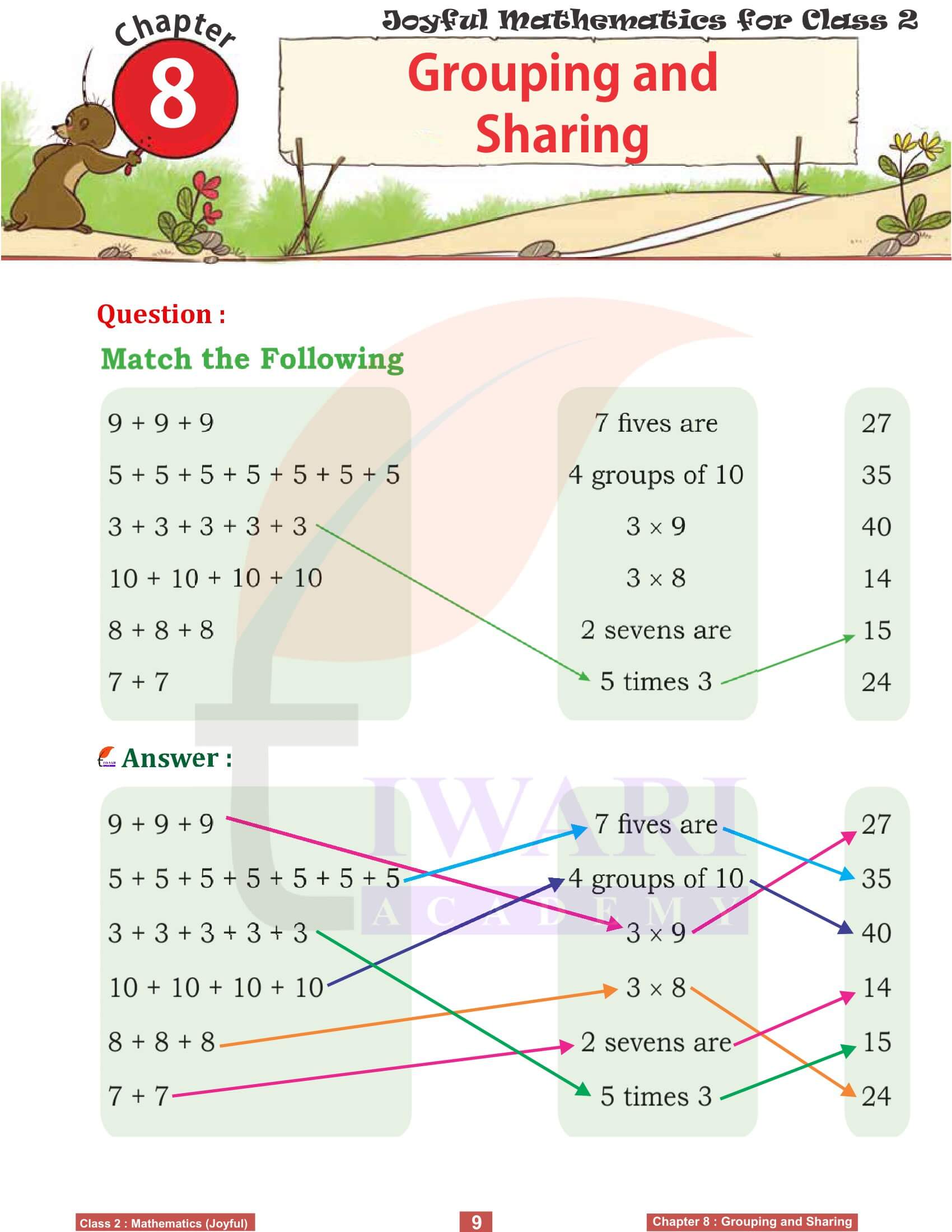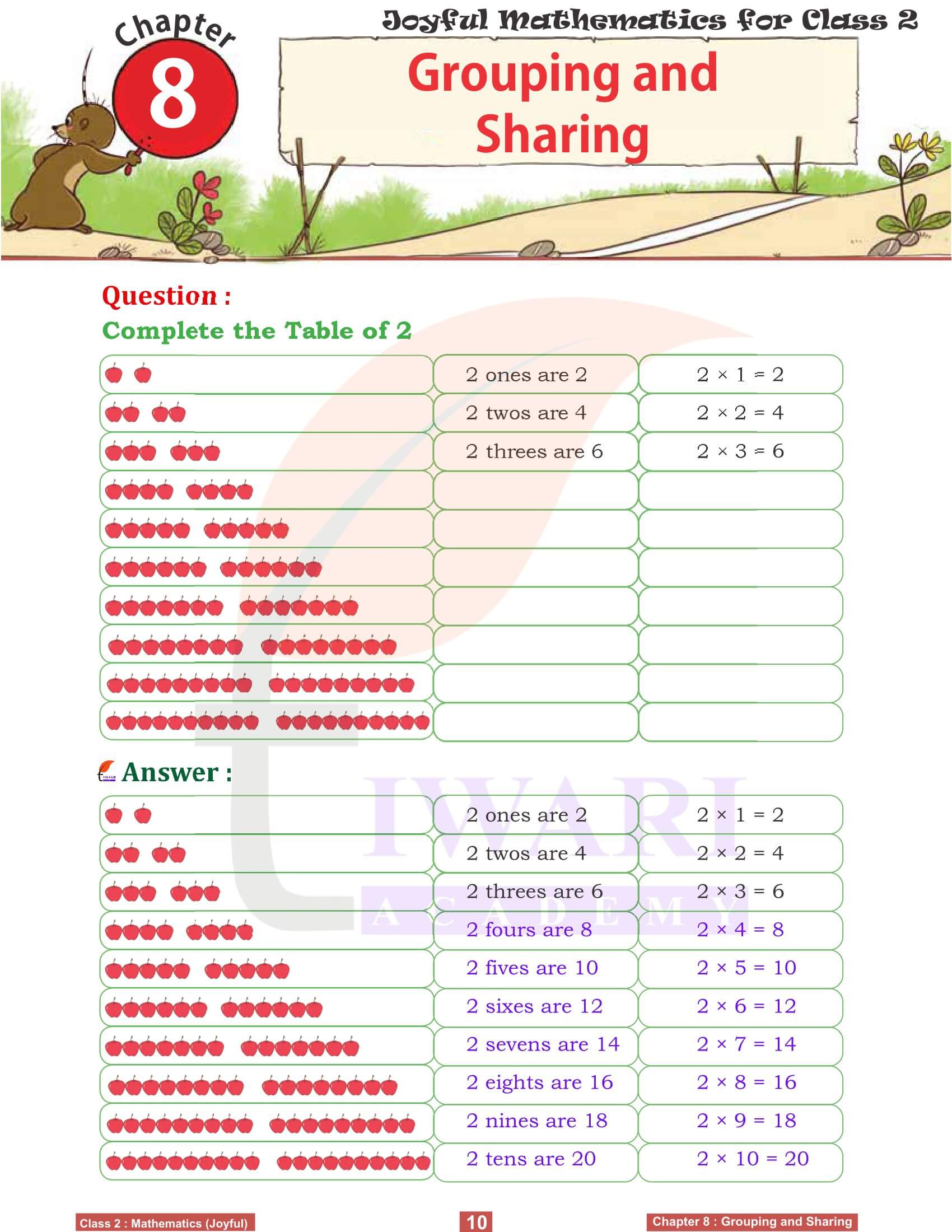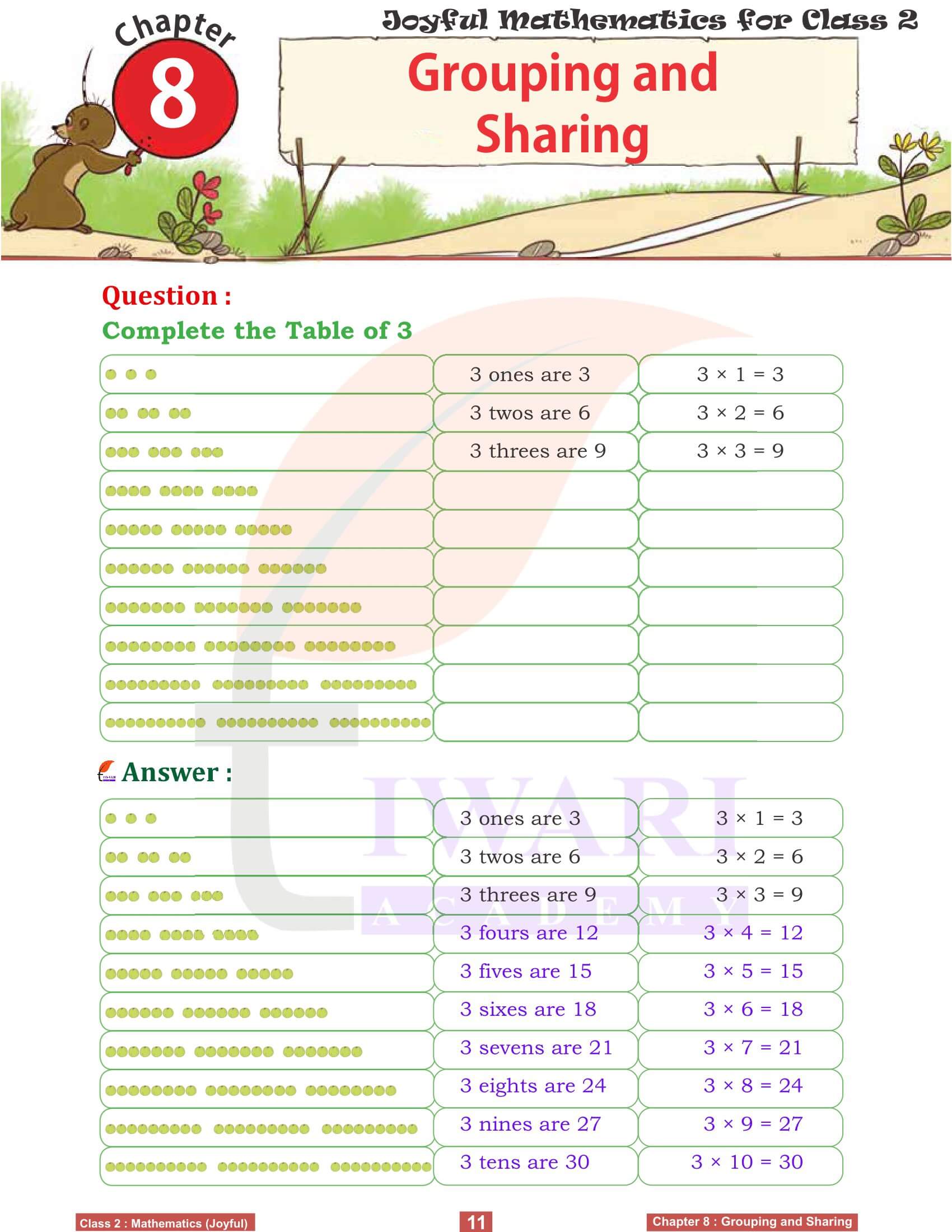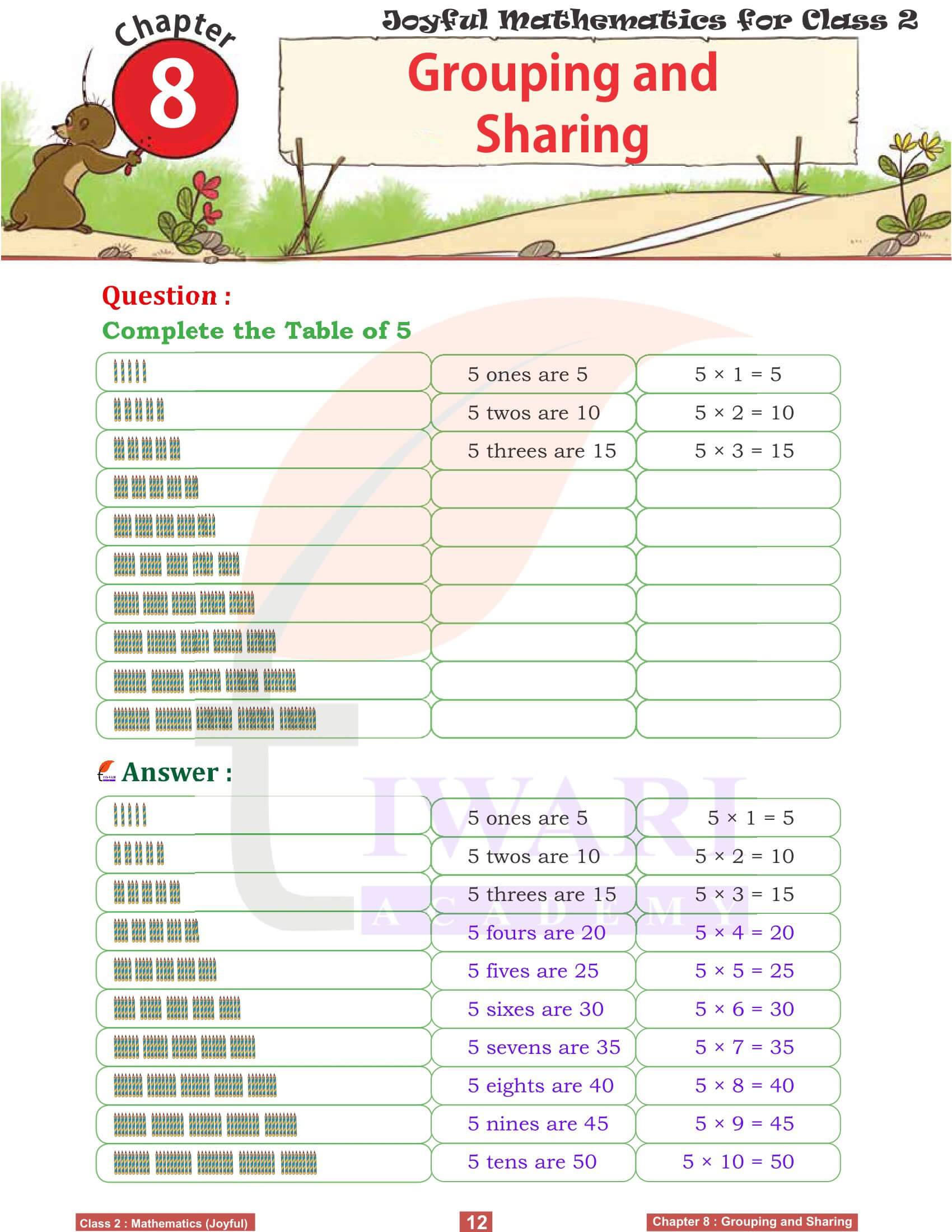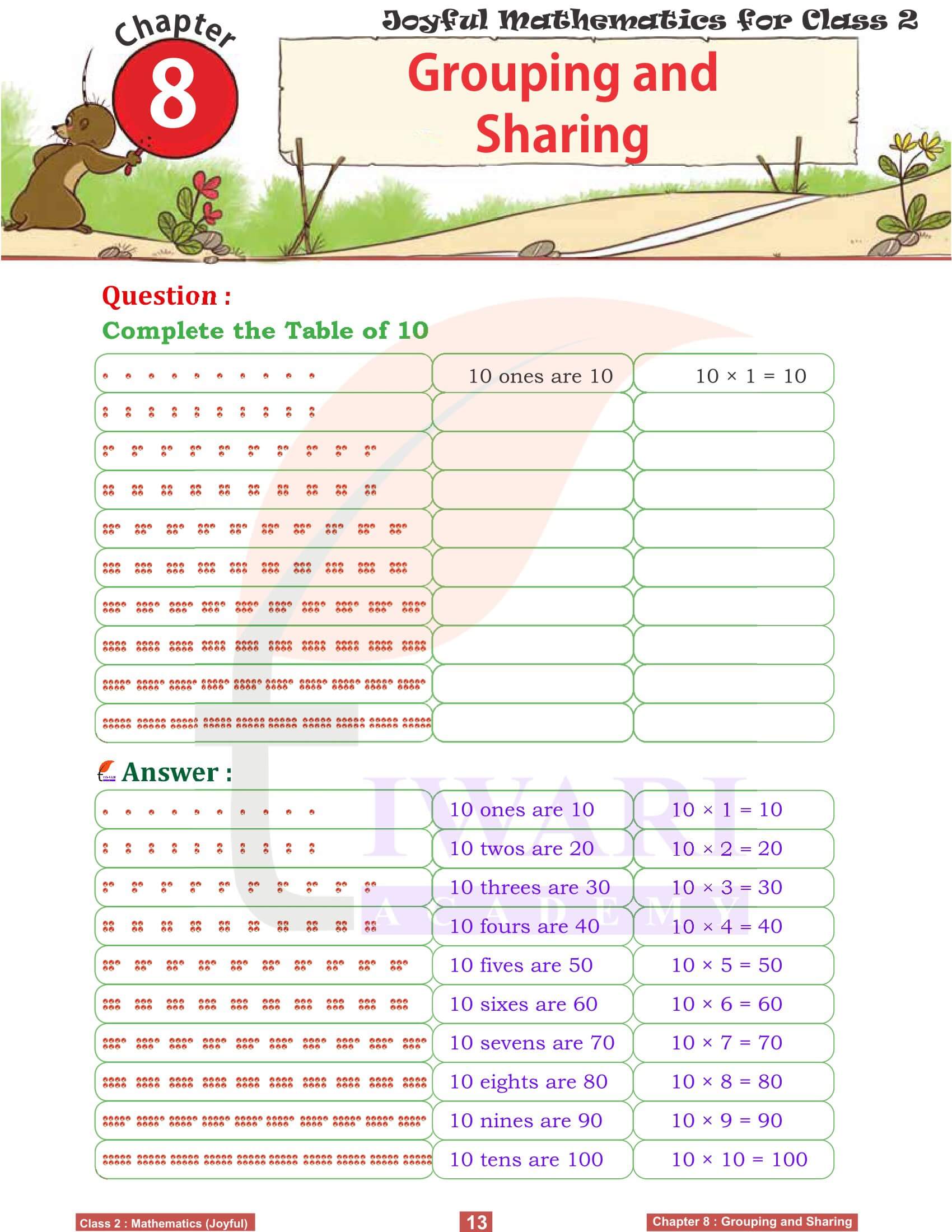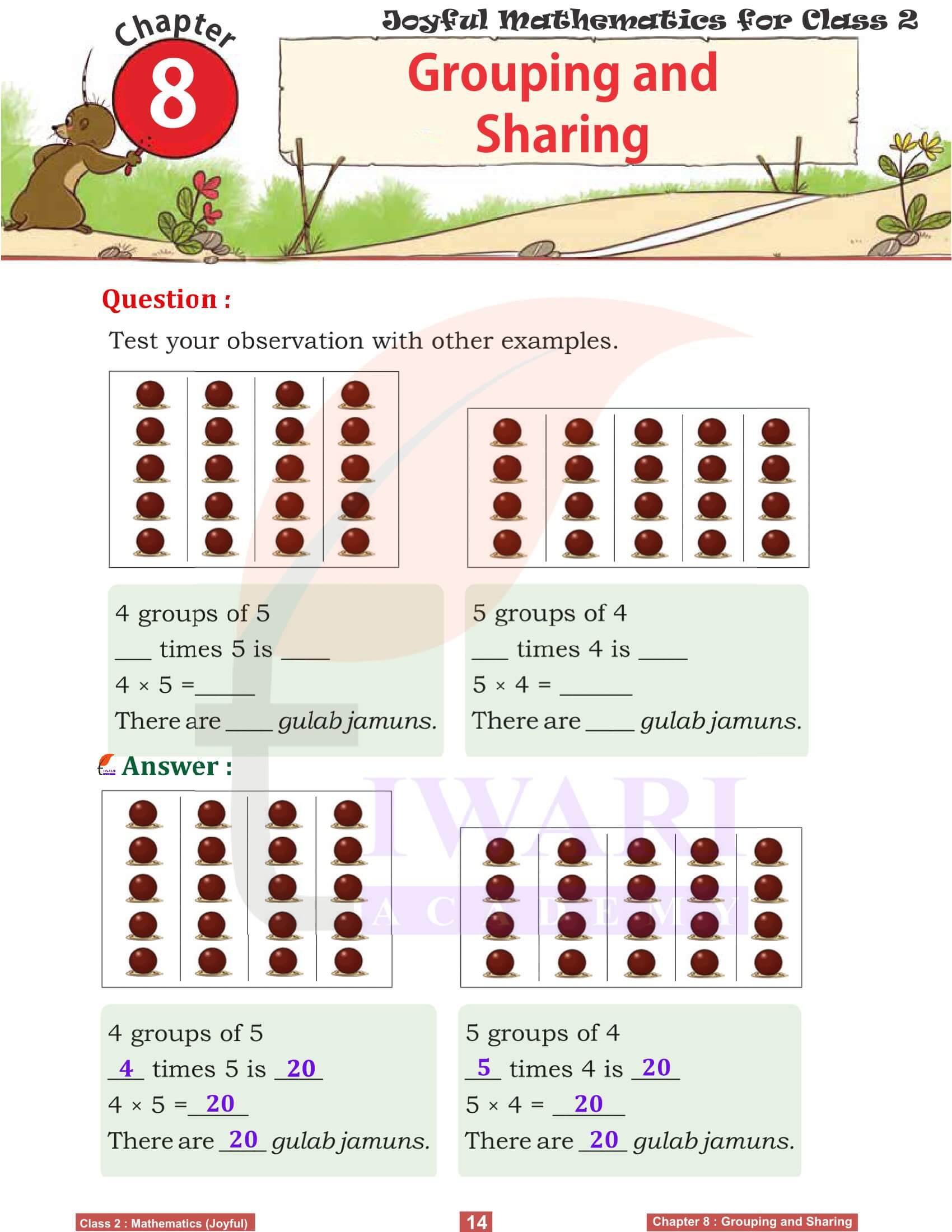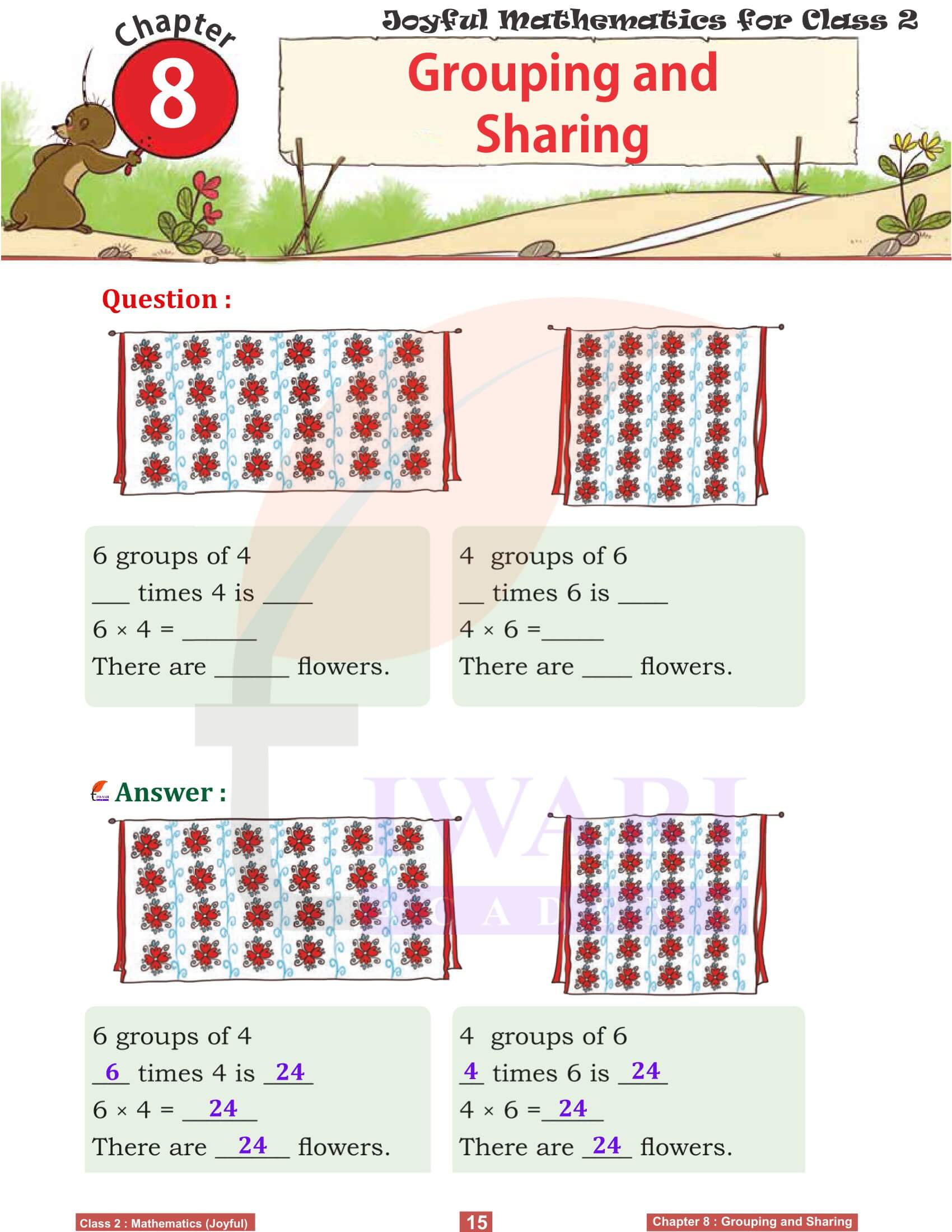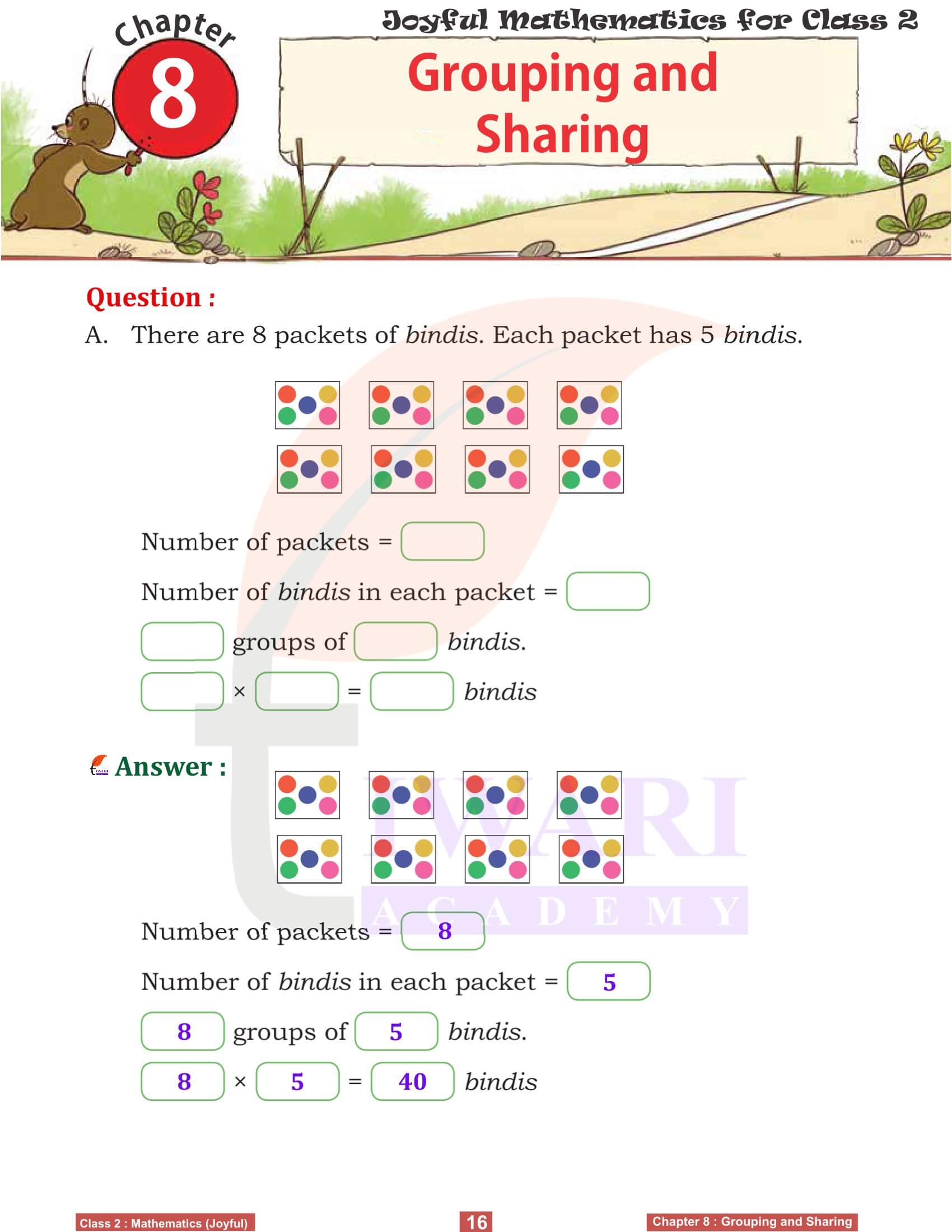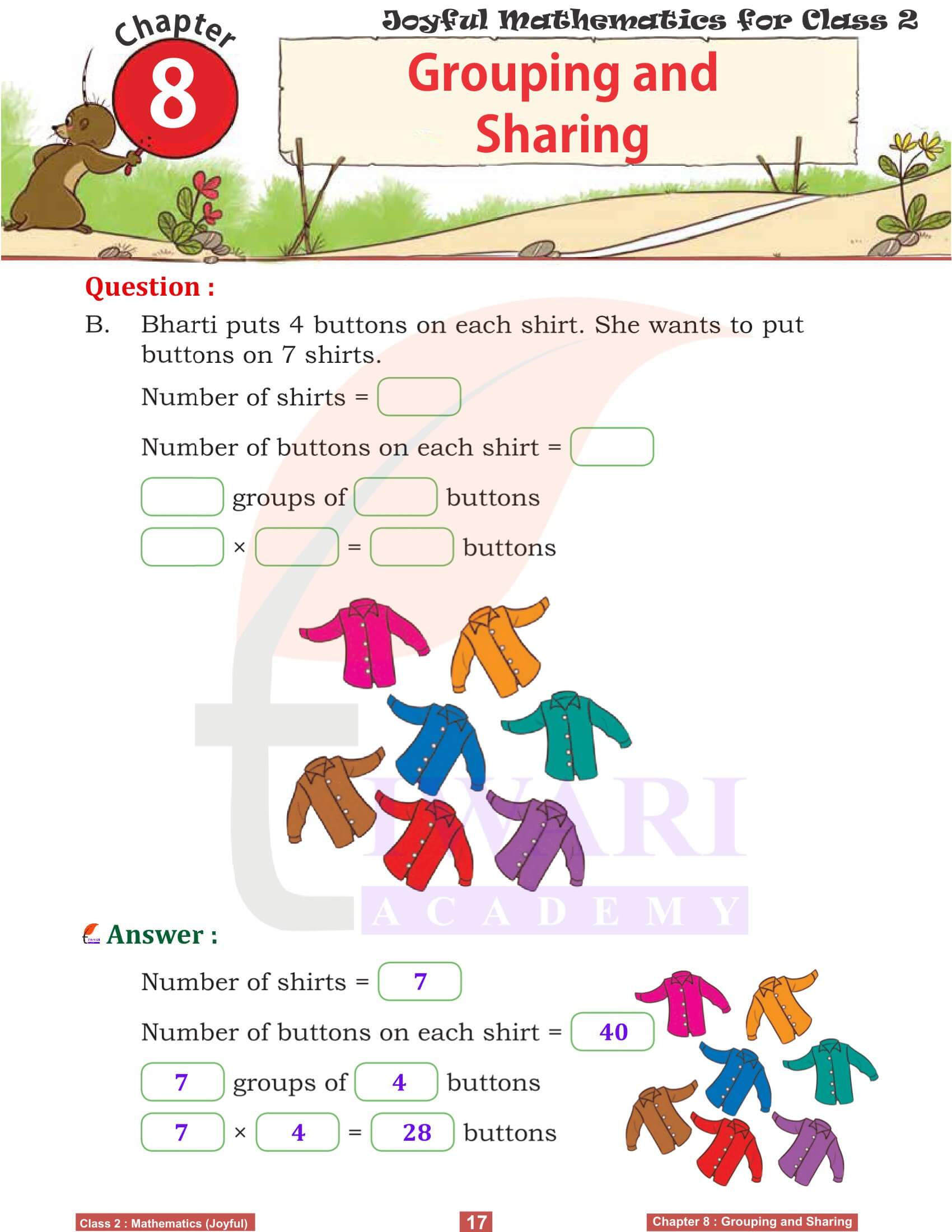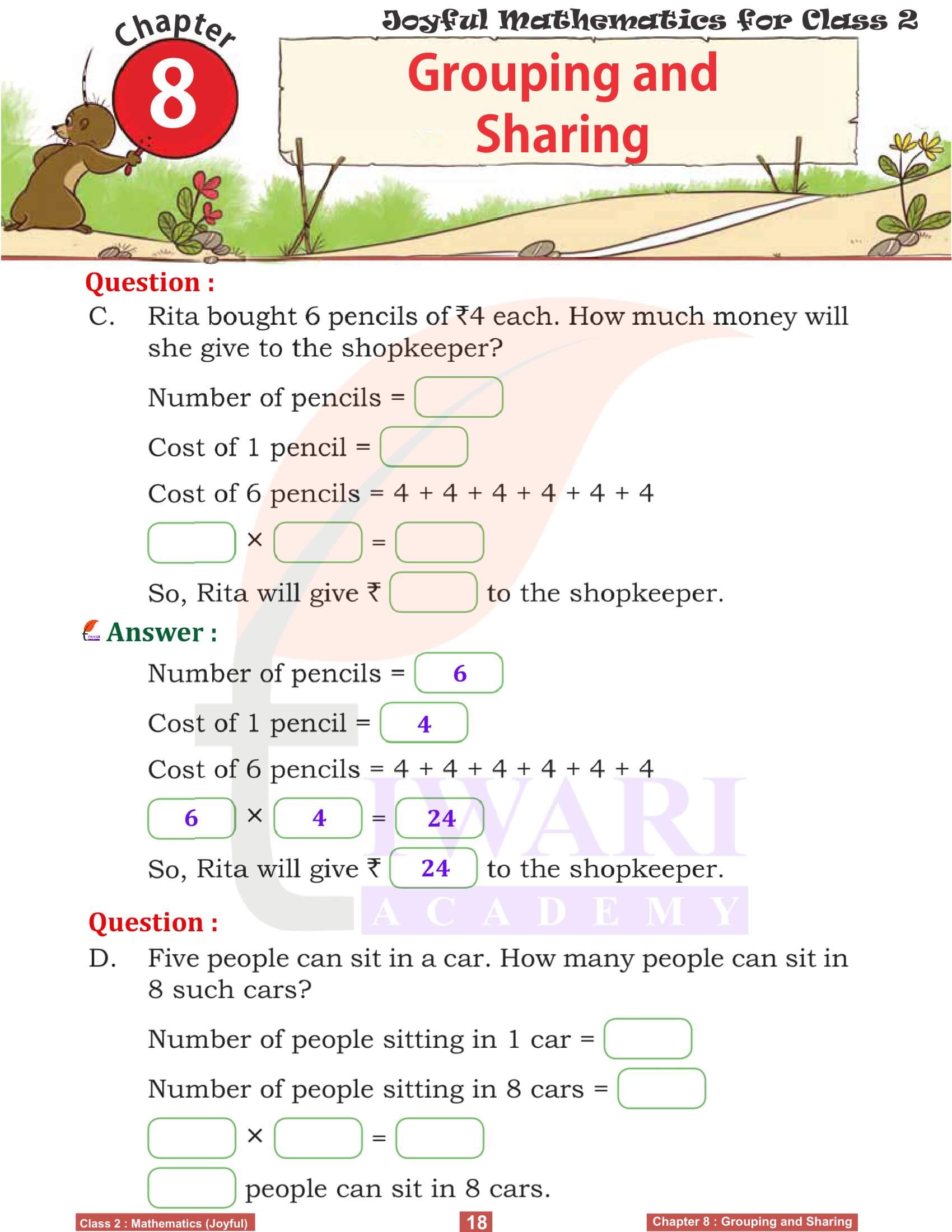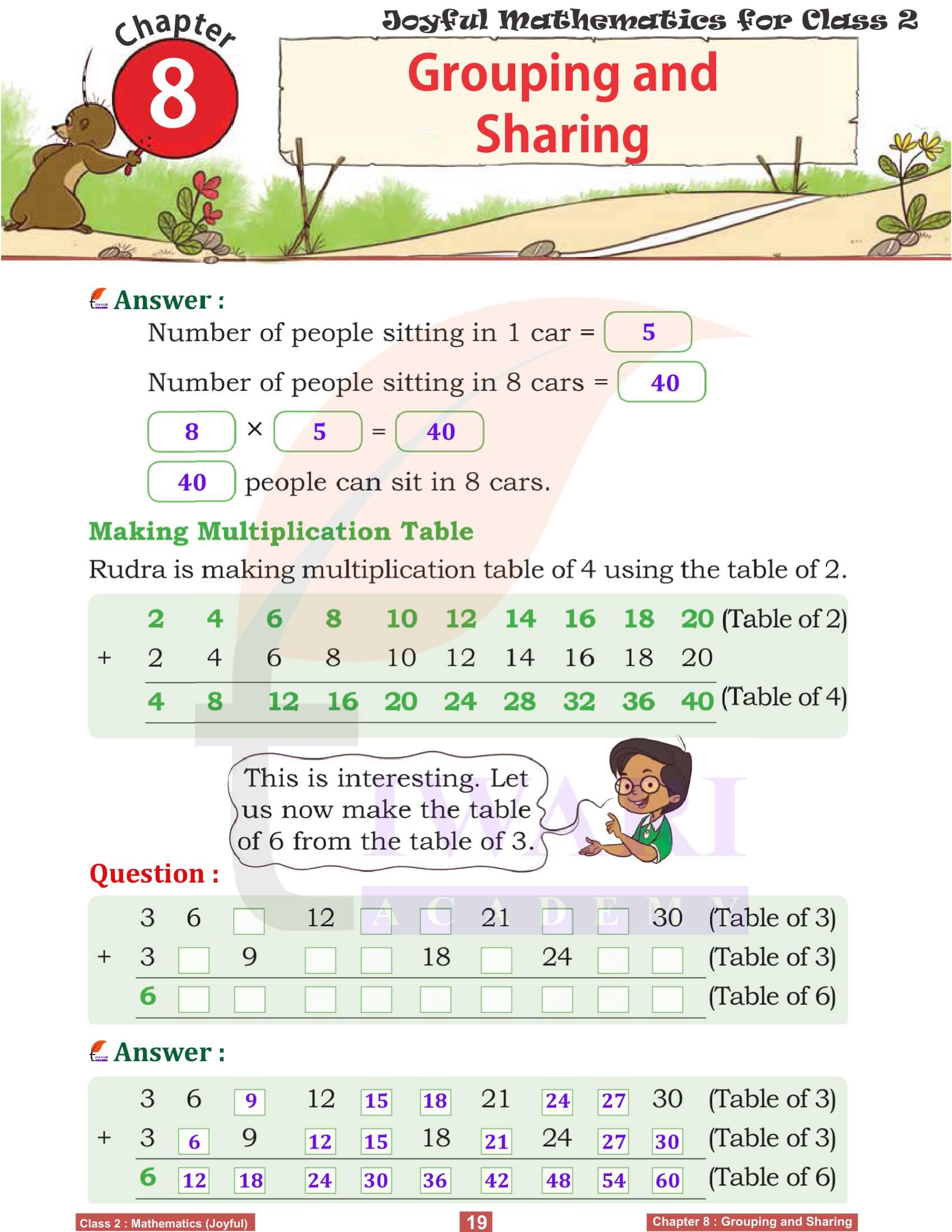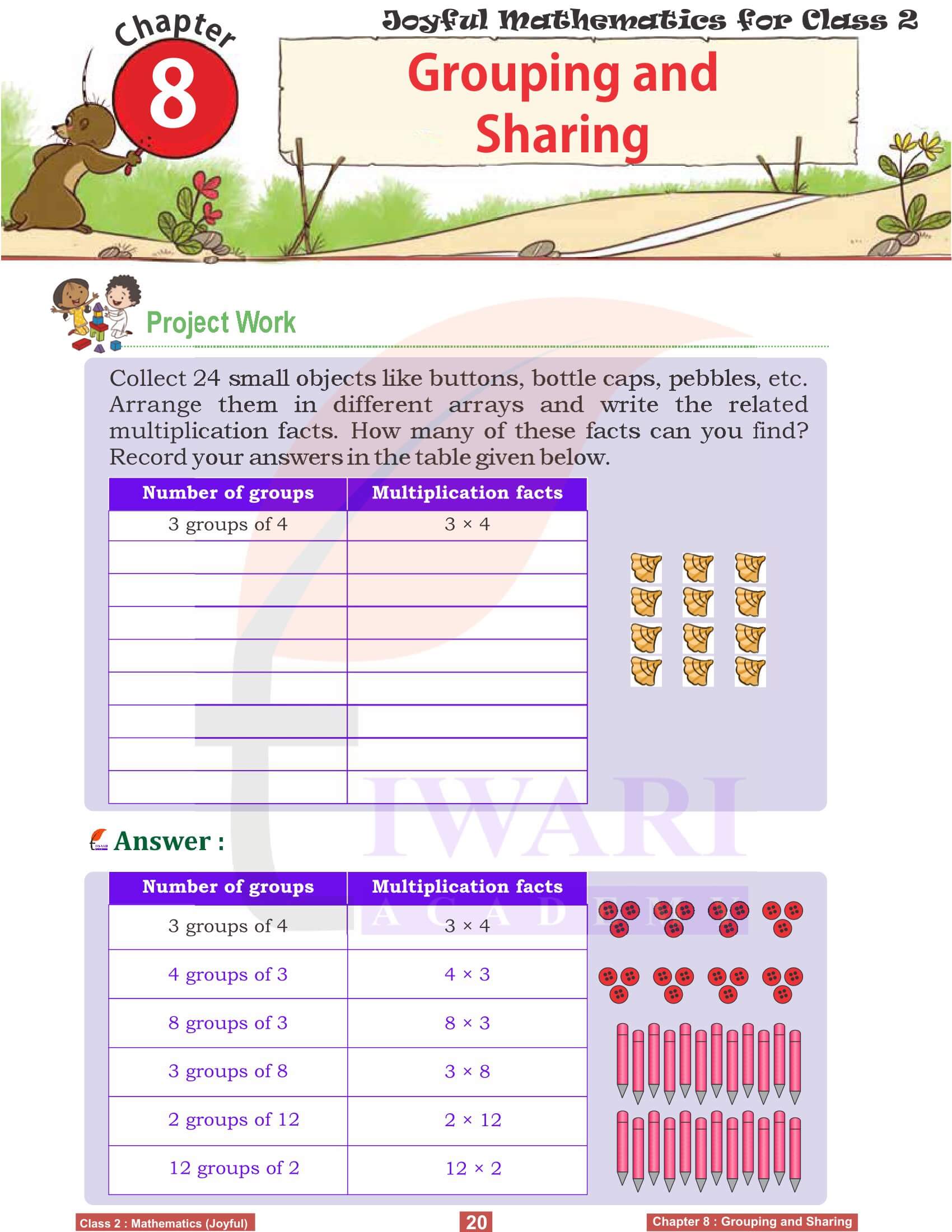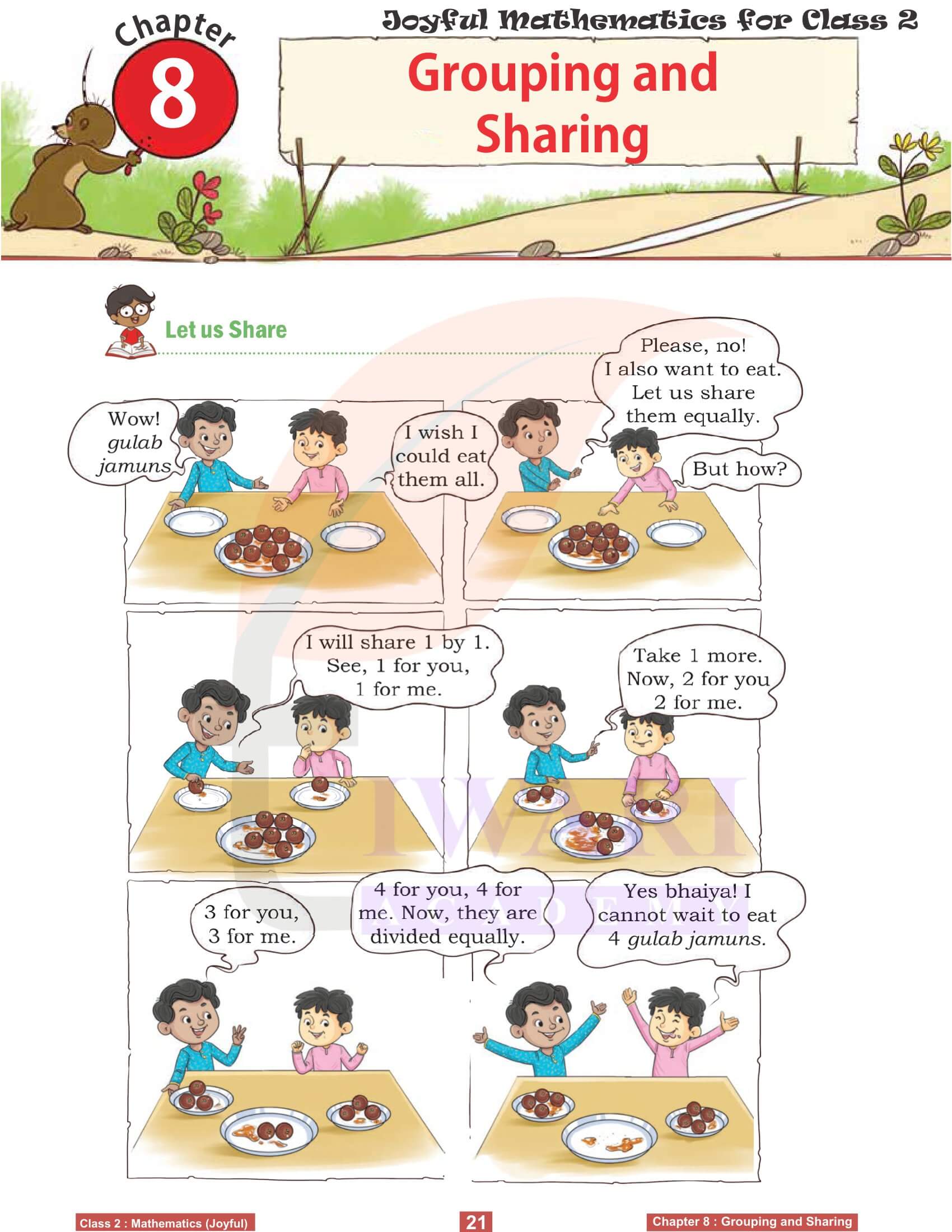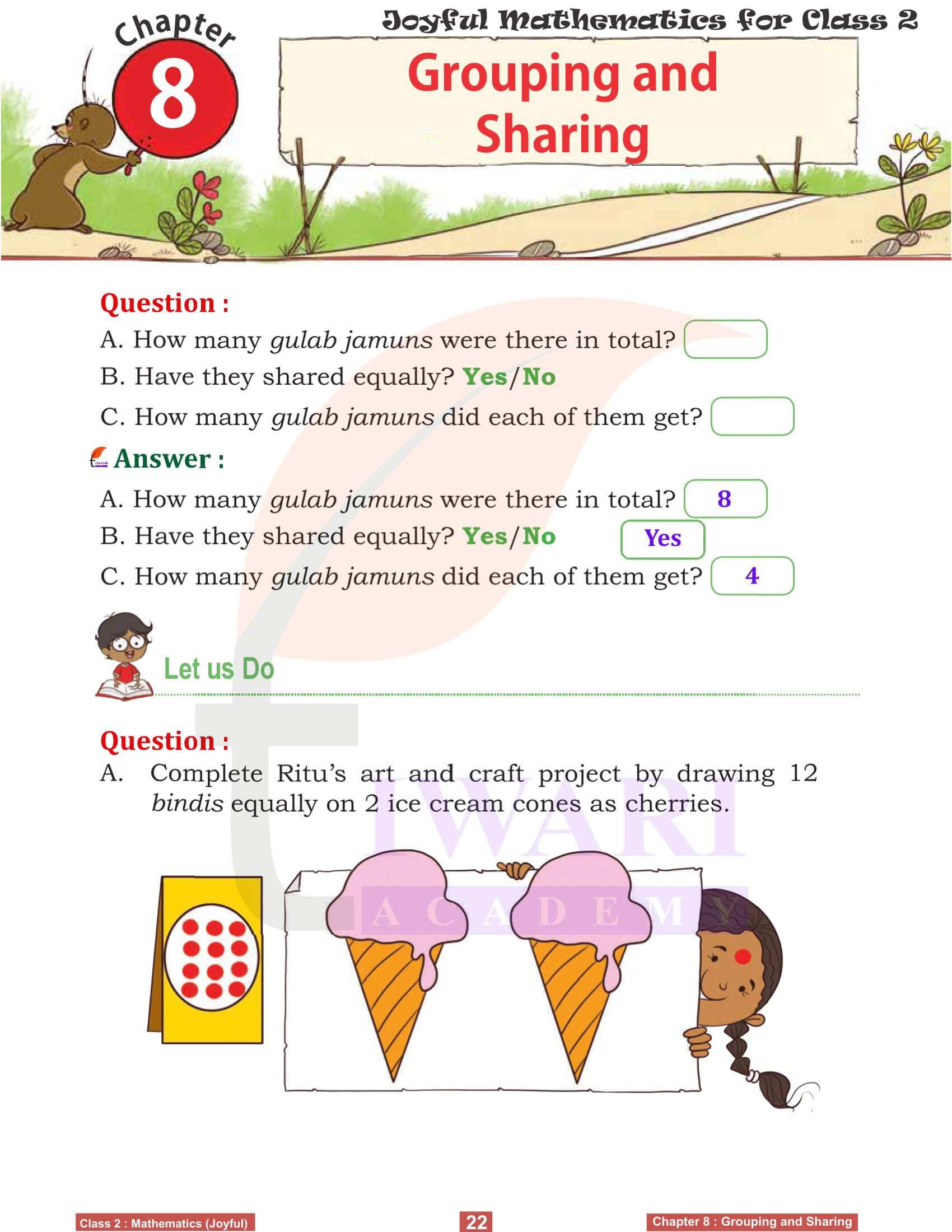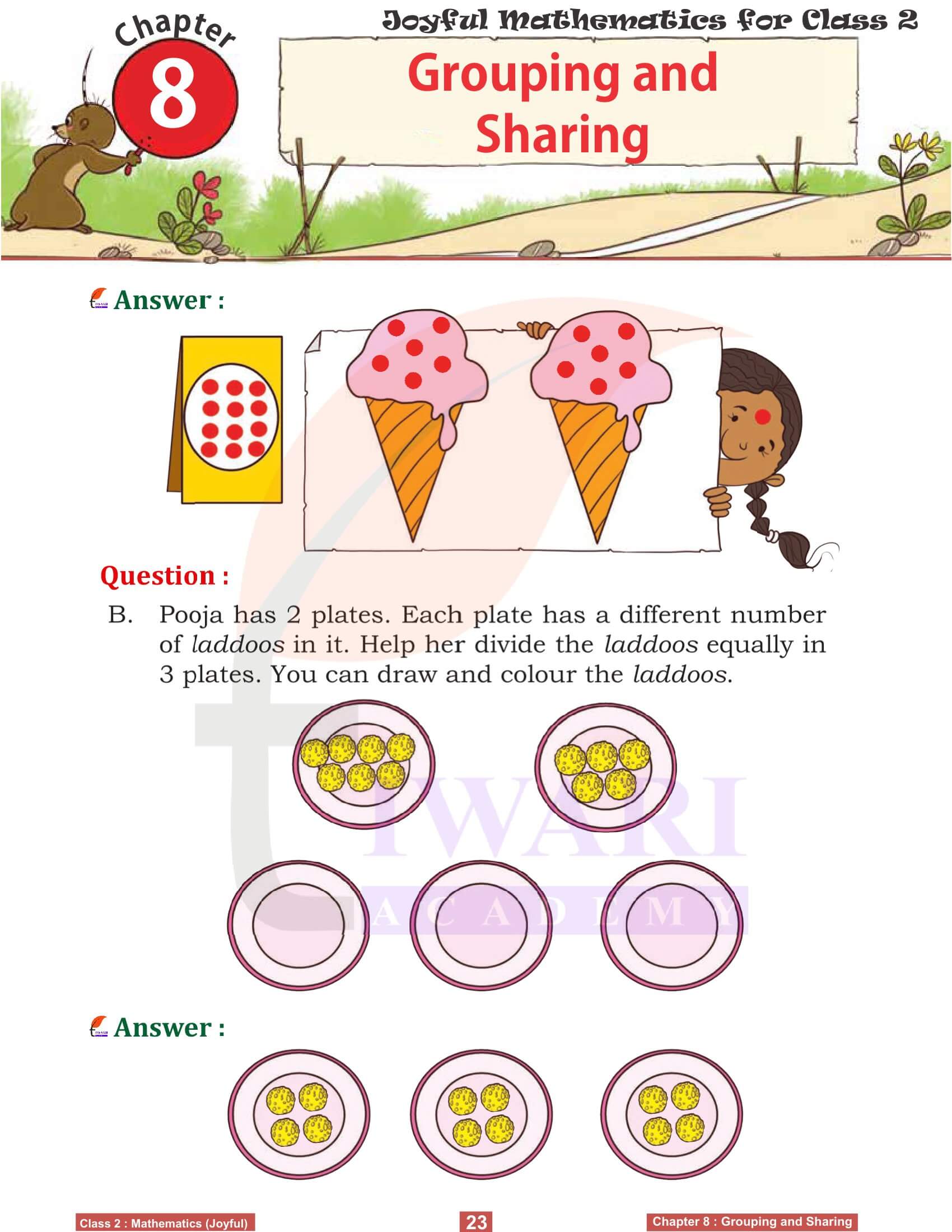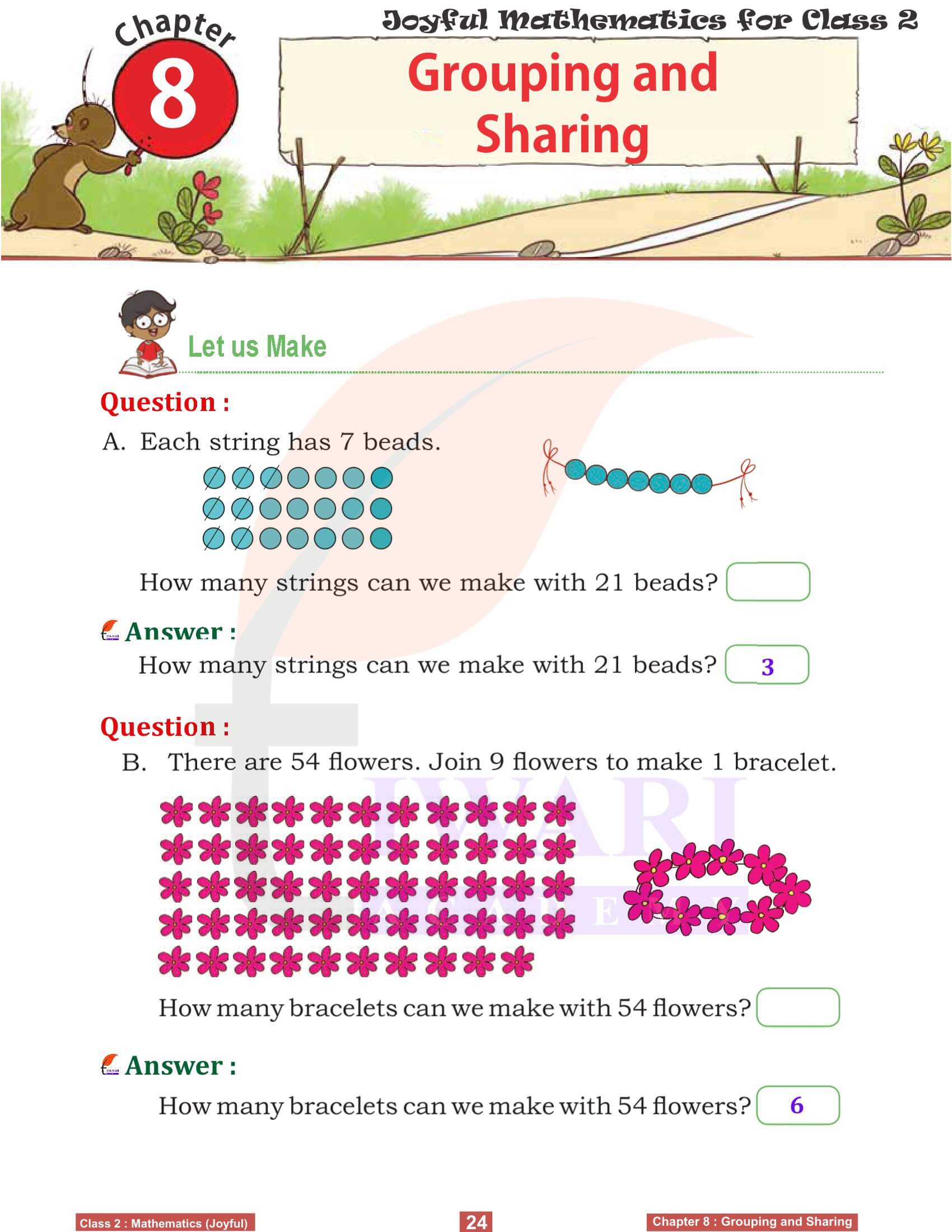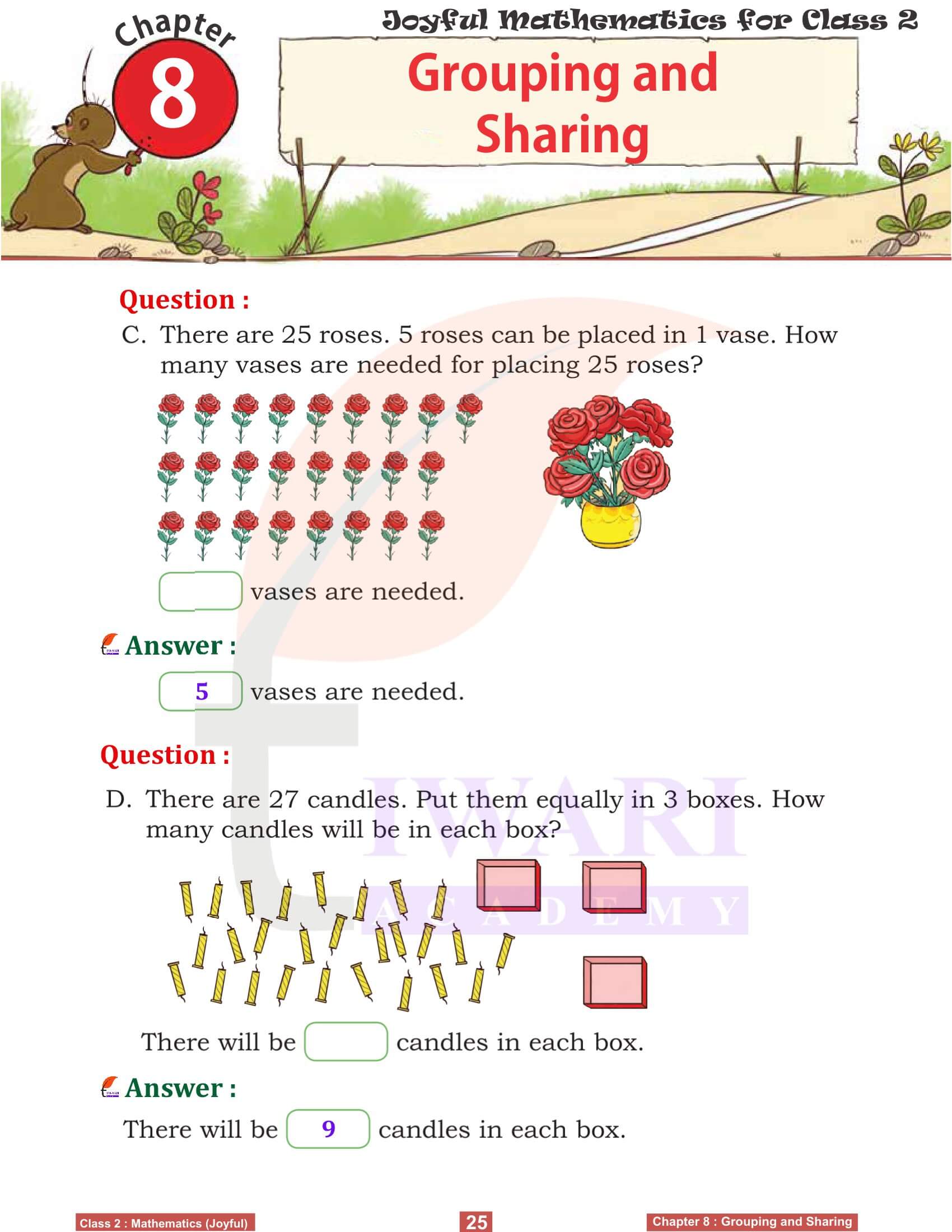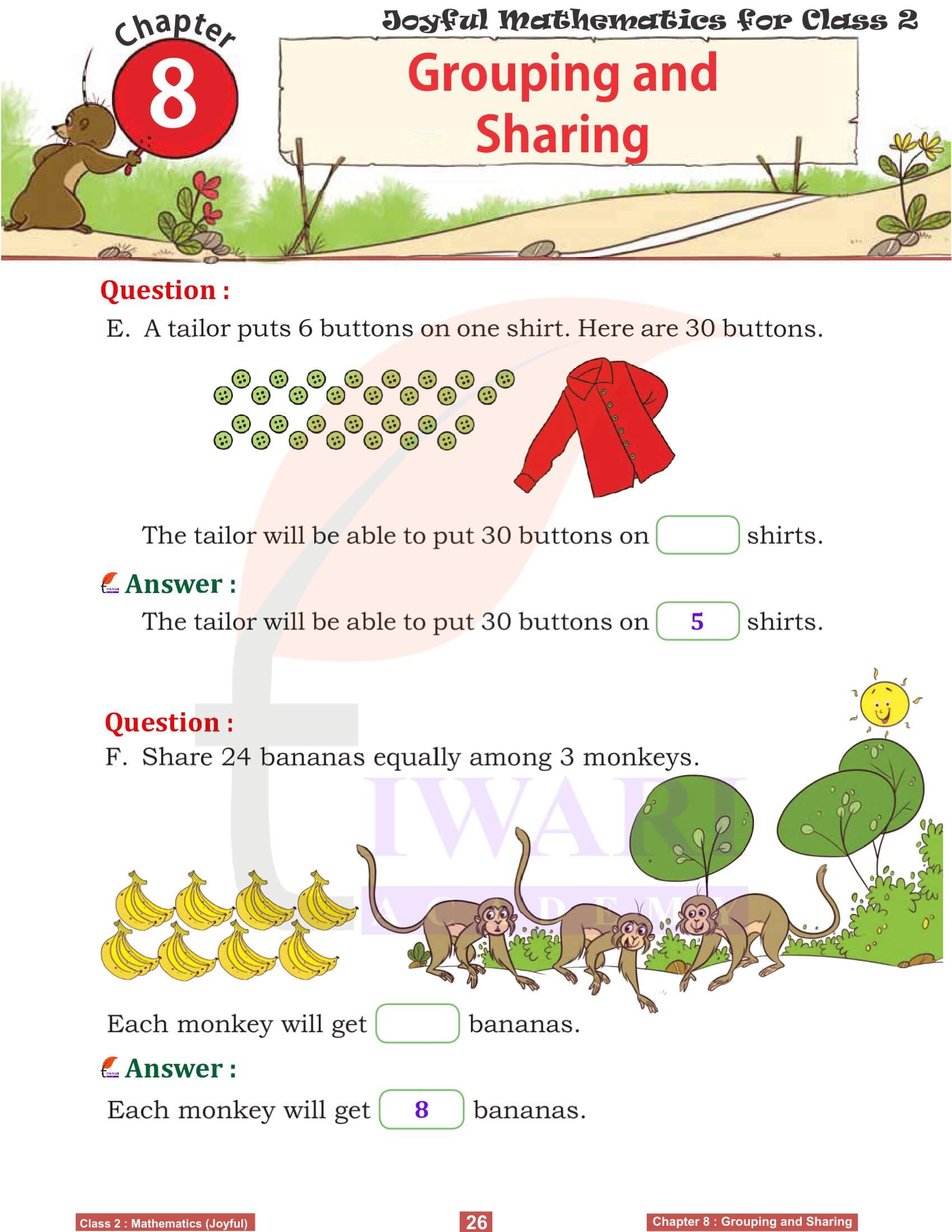NCERT Solutions for Class 2 Joyful Maths Chapter 8 Grouping and Sharing (Multiplication and Division) in Hindi and English Medium revised and prepared for academic session 2024-25. Class 2 Maths Chapter 8 question answers are updated according to NEP 2020.
Class 2 Joyful Maths Chapter 8 Grouping and Sharing Solutions
Class 2 Maths Chapter 8 Grouping and Sharing (Multiplication and Division)
Understanding Grouping in Multiplication: Grouping is a fundamental concept in multiplication that helps young students grasp the idea of adding equal groups together. In Class 2, Chapter 8, students learn to view multiplication as repeated addition, which lays a solid foundation for their mathematical understanding. For instance, if they need to calculate 3 groups of 4 apples, they learn to perceive it as 4 apples added together 3 times (4 + 4 + 4). This method transforms abstract multiplication into something tangible and relatable. Students engage in various hands-on activities, such as grouping objects or using visual aids like pictures and arrays, which help them internalize this concept effectively. By the end of the chapter, students can relate multiplication to their everyday experiences, enhancing their comprehension and retention.
Division as Sharing Equally
The chapter 8 of 2nd Maths progresses to introduce division as a form of fair sharing or grouping, which complements the multiplication section. Here, students learn to divide objects into equal groups, understanding division as the inverse of multiplication. For instance, if they have 12 candies and need to share them equally among 4 friends, they discover how to distribute the candies so that each friend gets an equal amount. This section emphasizes real-life scenarios where division is applicable, making it more relevant and engaging for the students. Through various interactive and illustrative methods, such as using counters or drawing, students grasp how division works in a straightforward and enjoyable manner.
Practical Applications of Grouping and Sharing
The chapter 8 encourages students to apply their knowledge of grouping and sharing to solve practical problems. They engage in activities that mimic real-life situations, such as dividing pencils among classmates or grouping fruits into baskets, which help them understand the relevance of multiplication and division. These practical applications ensure that students can see the real-world utility of what they’re learning, thereby deepening their understanding and interest. By contextualizing mathematical concepts, the chapter helps students appreciate the value of math in everyday life and encourages them to apply their skills beyond the classroom.
Visual Aids and Tools for Learning
Visual aids play a crucial role in teaching complex concepts like multiplication and division to young learners. In chapter 8, various tools such as arrays, number lines, and pictorial representations are used to demystify these concepts. These aids not only make learning more interactive but also help students visualize mathematical operations, aiding in better comprehension and memory retention. For instance, arrays can show how numbers are grouped in multiplication, making the process transparent and logical. Such visualizations are particularly effective for kinesthetic learners who benefit from seeing and touching the mathematical concepts they are learning.
Engaging in Group Activities
Group activities are an integral part of chapter 8, providing students with opportunities to collaborate and learn from each other. These activities encourage students to communicate their thought processes, listen to different perspectives, and build a communal learning experience. Working together on multiplication and division problems, students can share strategies, correct each other’s misconceptions, and develop social skills alongside mathematical understanding. These group interactions are vital for building confidence and encouraging a positive attitude toward learning mathematics, making the subject more approachable and enjoyable.
Assessment and Reinforcement
The chapter 8 of class 2 Maths concludes with various assessment and reinforcement strategies to ensure that students have internalized the concepts of grouping and sharing. Through quizzes, games, and interactive exercises, teachers can gauge each student’s understanding and provide additional support where needed. Reinforcement activities are designed to be fun and engaging, helping students consolidate their learning in an enjoyable way.
These assessments are crucial for identifying any gaps in understanding and ensuring that students are well-prepared to progress to more advanced mathematical concepts with a solid foundation in multiplication and division.
